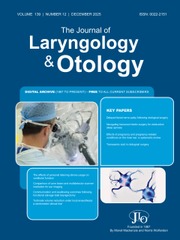No CrossRef data available.
Article contents
The role of using the submucosal conchoplasty technique for the management of concha bullosa in decreasing post-operative middle meatus synechia formation after functional endoscopic sinus surgery: a randomised controlled trial
Published online by Cambridge University Press: 29 April 2024
Abstract
The study aimed to compare the applicability of classic lateral lamellectomy versus submucosal conchoplasty techniques in managing concha bullosa during and after functional endoscopic sinus surgery.
The study randomly divided 56 patients with bilateral concha bullosa into two groups. One group of patients underwent the submucosal conchoplasty technique and the other group underwent the lateral lamellectomy technique. The study compared the intra-operative findings, including the time required for each technique, the amount of intra-operative bleeding and the post-operative endoscopic outcome of the middle meatus and middle turbinate stability.
Submucosal conchoplasty was significantly more time-consuming than the lateral lamellectomy technique (p = 0.001*). The difference in the intra-operative amount of bleeding was (p = 0.086*). The lateral lamellectomy group showed a higher rate of synechia formation in the middle meatus (p = 0.012*).
Submucosal conchoplasty is a valid technique for managing concha bullosa with better post-operative endoscopic outcomes.
- Type
- Main Article
- Information
- Copyright
- Copyright © The Author(s), 2024. Published by Cambridge University Press on behalf of J.L.O. (1984) LIMITED
Footnotes
Ali Gamal Ali Elouny takes responsibility for the integrity of the content of the paper


